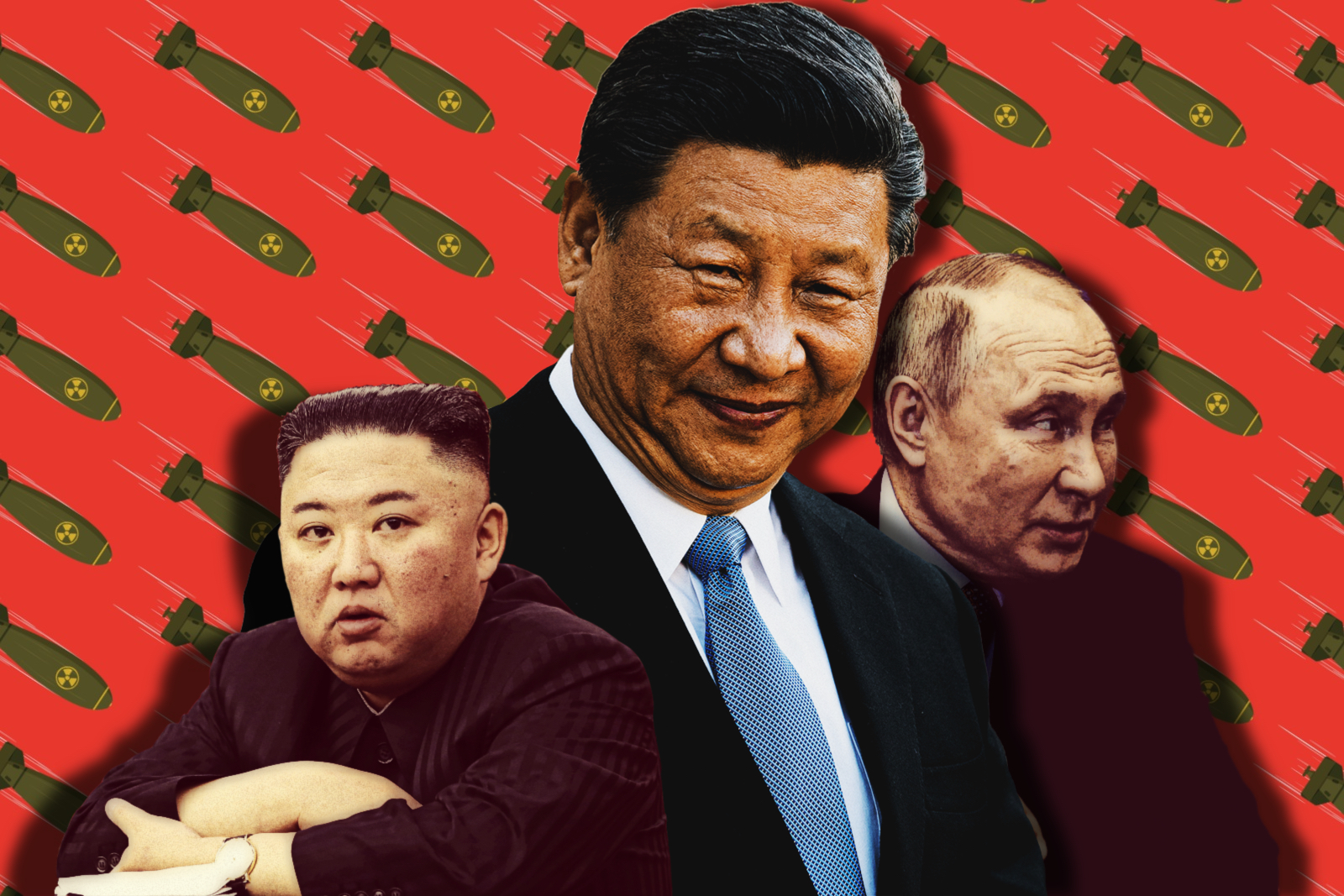
U.S., Japan, and the Philippines Draw Closer Together
The recent White House summit between President Joe Biden and Japanese Prime Minister Fumio Kishida signifies a strategic realignment of powers reminiscent of historical alliances, forged anew against the expanding shadow of China’s regional ambitions in the Indo-Pacific theater. The summit at the White House underscores a burgeoning partnership, underpinned by deepening economic ties, shared democratic values, and a mutual commitment to a free and open Indo-Pacific—now threatened by the geopolitical maneuvers of China, alongside Russia and North Korea.
President Biden, in a statement reflective of the gravity of these talks, proclaimed, “This is the most significant upgrade in our alliance since it was first established.” The two hours of dialogue set the foundation for what appears to be a seismic shift in international relations.
At the conclusion of a grand state dinner, Biden eloquently reinforced the United States’ dedication to fostering critical partnerships within the Indo-Pacific region, amidst the resurgence of China’s military and economic prowess. “We’ve been brought together — the same hopes, the same values, the same commitment to democracy and freedom and to dignity for all. And today, without question, our alliance is literally stronger than it has ever been,” Biden articulated.
Prime Minister Kishida addressed the nuanced tensions between Taiwan and China, affirming a collective pledge to uphold a global order anchored in the rule of law. This was a response to Chinese leader Xi Jinping’s declaration that external forces would not obstruct Taiwan’s reunification with the mainland. Kishida responded with resolve, stating, “Unilateral attempts to change the status quo by force or coercion is absolutely unacceptable, wherever it may be.” The U.S. and Japan, he affirmed, are prepared to confront such challenges, including those posed by China.
Kishida drew an ominous comparison. “Regarding Russia’s aggression of Ukraine…Ukraine today may be East Asia tomorrow,” foreshadowing potential regional escalations.
Discussions further emphasized the strengthening military ties between the U.S. and Japan, as both nations navigate the perceived threats emanating from China. Talks are in motion to enhance military cooperation, potentially reshaping the U.S. military command in East Asia—a move signaling a pronounced pivot in the region’s strategic framework.
President Biden detailed plans for bilateral military integration, announcing a joint command structure, and, in collaboration with Australia, the development of a novel air missile defense network. Further, the partnership extends to space, with Japanese astronauts poised to join NASA’s lunar exploration missions.
The Philippines’ participation introduces a critical dimension to this nascent tripartite relationship, especially against the backdrop of the South China Sea’s simmering tensions. The Philippines has been on the receiving end of China’s assertive territorial assertions.
Chinese maritime entities have escalated tensions through water cannon assaults, obstruction maneuvers, deployment of long-range acoustic devices, and ramming incidents—hostile actions against Philippine maritime assets.
Officially termed the Australia – Japan – Philippines – United States Maritime Cooperative Activity, this quadripartite initiative began last November, a direct response to these provocations, manifesting in strategic joint patrols.
In anticipation of the trilateral talks, Philippine President Bongbong Marcos commented, “The main intent of this trilateral agreement is for us to be able to continue to flourish, to be able to help one another, and of course to keep the peace in the South China Sea and the freedom of navigation.”
The strategic imperative to interlace Japan and the Philippines within a cohesive regional security fabric, under the auspices of the United States, arises from an intricate interplay of geopolitical, military, and economic considerations—exacerbated by the actions and ambitions of China, North Korea, and Russia. Each of these nations presents distinct challenges, compelling a concerted and formidable response to guarantee the Indo-Pacific’s stability and affluence.
China’s territorial claims and military encroachment in the South China Sea challenge the sovereignty of nations in the region, including the Philippines, and threaten the principle of free navigation—a crucial artery for global trade. China’s broader intent to reshape the international order in its favor necessitates a collective defense and deterrence posture among the U.S. and its allies.
The relentless progression of North Korea’s nuclear and ballistic missile programs presents an immediate and capricious threat, not just to its proximate neighbors like Japan, but also to wider regional and global security. The unpredictable nature of North Korea’s governance, characterized by its isolationist and confrontational foreign policies, demands a tightly coordinated defense strategy among nations within its projectile range.
Russia, while geographically more removed, influences the regional dynamic through its strategic alliance with China and its military and economic activities in the Arctic, Europe, and cyberspace. Russia’s maneuvers, often aimed at diminishing U.S. influence and fracturing alliances both within and outside the Indo-Pacific, compound the region’s security equation.
In responding to these multifaceted threats, the U.S. recognizes the incorporation of Japan and the Philippines into a unified security framework as imperative. Japan contributes advanced military capabilities and technological expertise, serving as a cornerstone of regional defense that can project power and provide sophisticated defense systems.
The Philippines occupies a pivotal geographical position, serving as a vital conduit to the South China Sea and a frontline state in the struggle for influence in Southeast Asia. By augmenting interoperability, intelligence sharing, and collective military preparedness between the U.S., Japan, and the Philippines, the alliance seeks not only to forestall aggression but also to foster a rules-based international order.
Thus, this tripartite collaboration represents not merely a reaction to immediate threats but a forward-looking strategy to cultivate a balance of power in the Indo-Pacific. This balance ensures the interests of smaller nations, maintains open and free maritime routes, and upholds the tenets of sovereignty and international law. Through this united endeavor, the U.S. and its allies strive to erect a security architecture that is both resilient enough to adapt to shifting dynamics and robust enough to deter adversaries from destabilizing actions.

